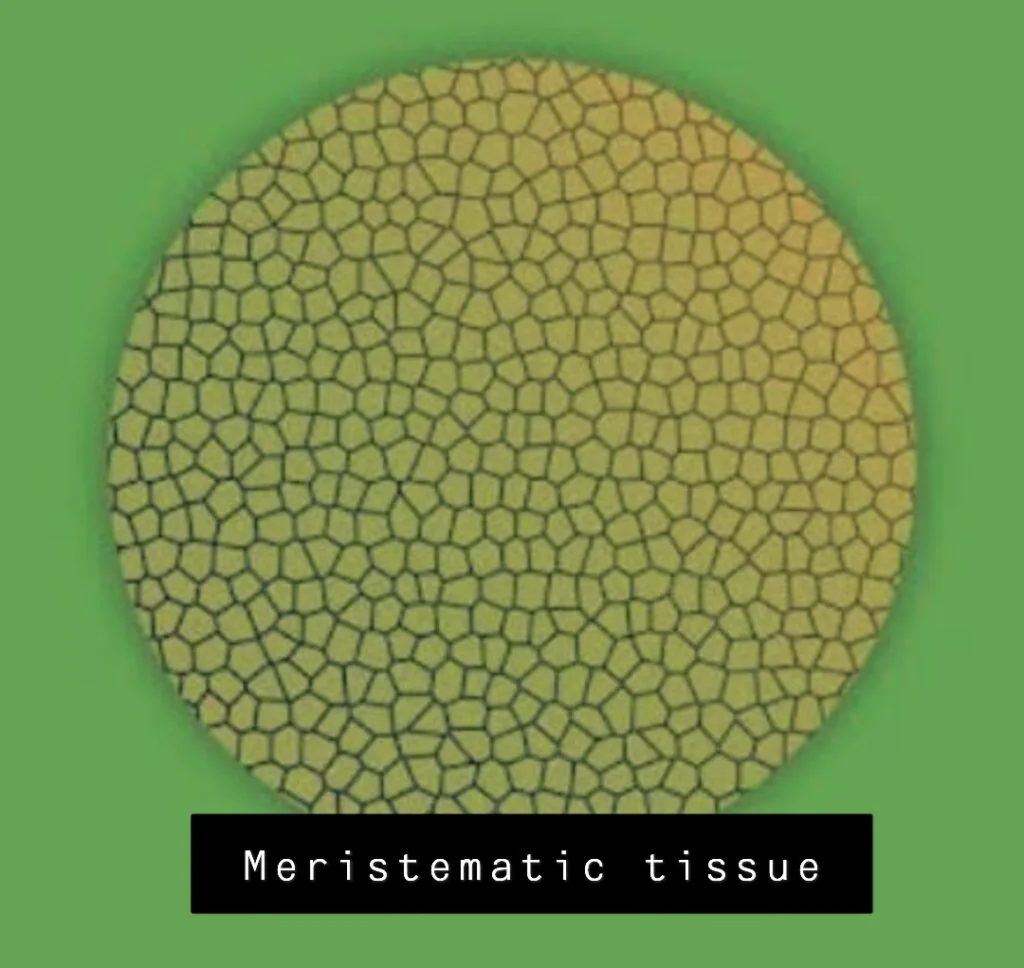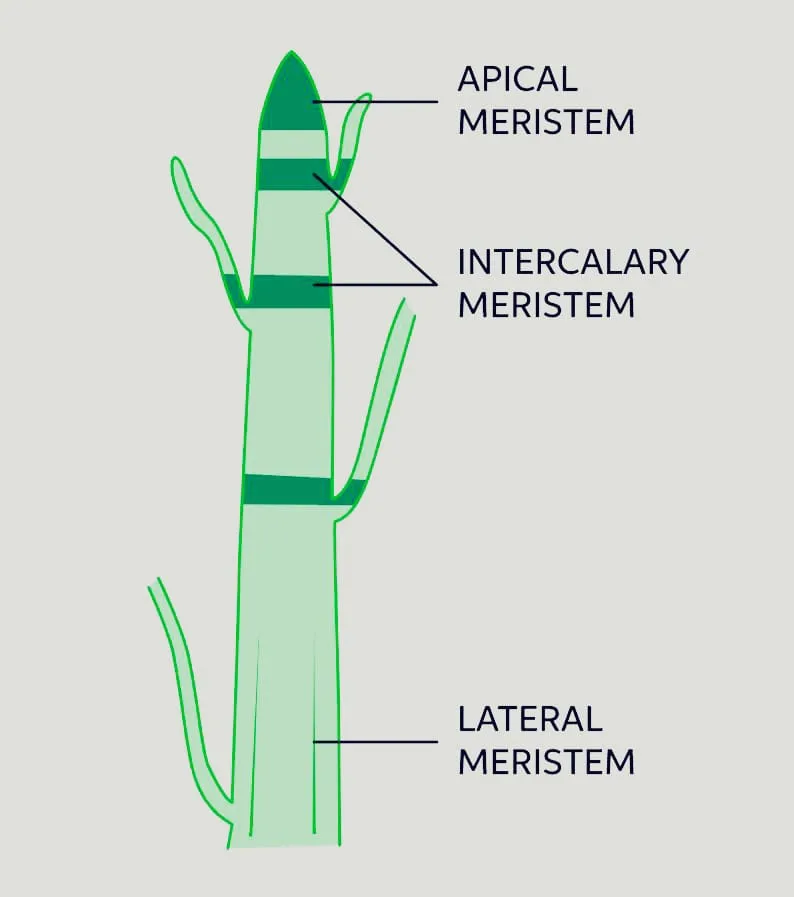Meristematic Tissue
Plant tissue that can keep dividing throughout its life is called meristematic tissue. It contains simple cells that later develop into different parts of the plant.
Characteristics of Meristematic Tissue
- Meristematic tissues consist of different shapes of living cells. They have a large nucleus without a vacuole. There is no intercellular gap in the cells. The meristem is the area where these cells are located.
- They have a high level of metabolic activity.
- They have a single, large, and noticeable nucleus.

Types of Meristematic Tissue
The three forms of meristematic tissues are the apical meristem, intercalary meristem, and lateral meristem.
Apical Meristem
positioned at the tips of the shoots and roots, which contributes to lengthening.
Lateral Meristem
Lateral refers to side-to-side movement and is used to describe width or thickness.
Intercalary Meristem
Placed near the base of the internodes and leaves, which aids in the development of twigs into branches.

Growth of Meristematic Tissue
As long as they are alive, meristematic cells help in the formation of shoots and roots. The main growth promotes the development of some plant organs as well as a specified height for the plant body. Plant parts grow from the splitting of tip cells, followed by their growth and specialization. Peas, Lotus japonicus, soybeans, and other plants are examples of legumes.
For Further Reading:




